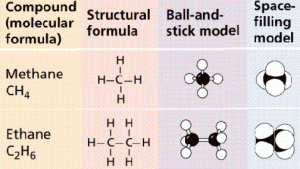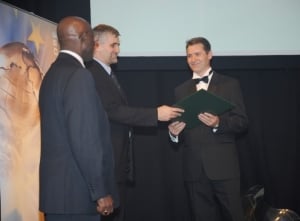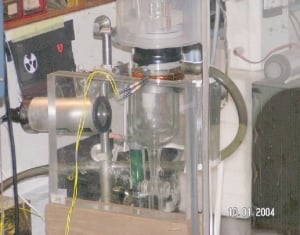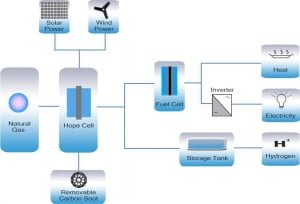Video: HOPE plasma cell #4 view from top
Early cold fusion researcher John O’M. Bockris is credited with coining the term “hydrogen economy” in 1970 while a Professor at University of Pennsylvania. Twenty years later, and one of the top electro-chemists in the world, Bockris became an embattled academic at Texas A&M University when he found positive results confirming the nuclear nature of the Fleischmann-Pons Effect (FPE).
His prescience in seeing humanity’s energy future within the most abundant element in the universe was shared by many. In Jules Verne‘s 1874 novel Mysterious Island, the author wrote “…I believe that water will one day be employed as fuel, that hydrogen and oxygen which constitute it, used singly or together, will furnish an inexhaustible source of heat and light, of an intensity of which coal is not capable.”
But why don’t we have a hydrogen economy now?
It’s not just the vested interests of the fossil fuel industry, or the ignorance of policy makers. The reason is mostly scientific.

Besides water, hydrogen is largely locked inside hydrocarbon molecules, the source of most hydrogen on the market today. Unfortunately, current processes, whereby high-temperature steam is heated with methane in the presence of a nickel catalyst to form the hydrogen, leave as by-product the greenhouse gas carbon-dioxide CO2.
Regardless of how efficient a fuel cell can be developed, existing production of hydrogen by steam thermal reaction produces almost 8.8 billion tons of the carbon per year (Royal Society of Chemistry, 2009). Burning a gallon of gasoline releases about 20 pounds of CO2. Producing 1 kg of hydrogen by another method using electrolysis would generate, on average, 70 pounds of CO2. [J. Romm, The Hype About Hydrogen]
The grim reality of our ‘Green Economy’ today is that retrieving hydrogen cleanly is an energy-expensive process, and still a technical challenge, reducing the economic viability of the abundant fuel: it takes so much energy to produce the hydrogen, the energy you get back just isn’t enough to make business, or ecological, sense.
But suppose we could, say, re-route the methane emitted as pollution from landfills and cheaply, safely decompose it into the hydrogen we want, while converting the CO2 into a solid soot form, which could be stored or re-purposed?

An independent effort, Vancina will present his work at this year’s Green Leaders Summit 2013 where he will be speaking before a host of innovators from around the world who are attempting to build a clean energy infrastructure.
Entrepreneurs such as Elon Musk, Chairman and CEO of TESLA Motors, have manufactured electric cars to run on lithium-ion batteries, not fuel cells, because of the difficulties that hydrogen poses as a fuel. The production, transport and storage of hydrogen all pose significant engineering challenges, until now. HOPE cell technology offers a path to on-demand hydrogen production in-situ, promising to revolutionize power production for applications from transportation to power-production for grid or grid-less energy supply.
 In developing his hydrogen-oxygen plasma electrolysis (HOPE) cell for hydrogen separation, Vancina discovered that it also made excess heat, and he is now developing a 5th generation model to enhance the low-energy nuclear reaction (LENR) effect.
In developing his hydrogen-oxygen plasma electrolysis (HOPE) cell for hydrogen separation, Vancina discovered that it also made excess heat, and he is now developing a 5th generation model to enhance the low-energy nuclear reaction (LENR) effect.
HOPE cell hydrogen production with added efficiency of LENR heat marks a transition technology between the 20th-century fossil fuel infrastructure we have now, and the de-centralized independent power production of the 21st-century new energy age we need.
Plasma research inspired by Tesla, Mizuno, and Cirillo
Vancina’s father was an inventor, but due to conditions in his home country of Croatia at the time, his dad remained unrecognized for his contribution. Instead, he taught his son the skills necessary to engineer dreams into real solutions.
As a young man, Vancina learned of Nikola Tesla‘s work, and then began his own plasma research. For Vancina, “it was a natural evolution that working on plasma implemented in hydrogen generation from water, I then became familiar with the work of Tadahiko Mizuno, Tadashi Akimoto, and Tadayoshi Ohmori, as well as other scientists such as Domenico Cirillo and Vicenzo Iorio.”
Michael Faraday‘s 1834 First Law of Electrolysis can be stated as “The amount of a substance consumed or produced at one of the electrodes in an electrolytic cell is directly proportional to the amount of electricity that passes through the cell.”
Vancina describes how a paper by Mizuno, Akimoto and Ohmori entitled “Confirmation of anomalous hydrogen generation by plasma electrolysis” [.pdf] discusses hydrogen generation in quantities greater than Faraday’s Law predicts.

“Mizuno observed non-Faradic hydrogen generation. For example: when plasma electrolysis occurred at 2 A/cm2 of input current at l20V and at an electrolyte temperature of 80 degrees C, Mizuno concludes that non-Faradic hydrogen generation occurs when the potential difference between electrodes is several hundred volts, but does not provide any explanation for controlling the plasma beyond short bursts.”
“A theory explaining plasma electrolysis that produces non-Faradic quantities of hydrogen, and giving some base for LENR, is outlined in a technical paper by Cirillo and Itorio entitled “Transmutation of metal at low energy in confined plasma in water”. [.pdf] Specifically, Cirillo teaches that electrolysis is aided by metal anions, dissolved in an electrolyte, which form a screen spaced a few nanometres from the cathode, thereby effectively forming an anode. This is known as a ‘double layer’. ”

“Increasing the applied voltage above 80V has the effect of significantly increasing hydrogen gas production to the point that the space between the cathode and the anion screen becomes filled with hydrogen gas. The gas has a much lower conductivity than the liquid electrolyte, so the resistance increases until unstable bursts of plasma form to discharge the potential difference between the cathode and the anion screen.”
“The high localized voltage can result in cathode temperatures for tungsten electrodes, greater than 3000″ C. Such heating of the cathode results in instant vaporization of electrolyte from the surface of the cathode and destabilizes plasma formation. Such a process also destroys the initiating electrode. ”

However, through his research, Vancina has learned much more about the properties of hydrogen bond clusters and discovered what he describes as “techniques of scalably controlling plasma in robust enclosures, relocating the plasma away from initial electrode, stabilizing its operation, and magnifying it throughout the cell body.”
“It represents a practical approach which is dedicated for hydrogen generation,” says Vancina. “Initiating and stabilizing the LENR exothermic emission also functions to enhance bond breaking, as well as the energy efficiency of the process.”
From hydrogen to heat

“Cold Fusion seemed like a reasonable explanation at the time, but this raised some concern due to the sensitivity of publication,” he says. “After more research and testing I realized that this is a reaction of atomic hydrogen generated with plasma dislocation of medium, so I could apply techniques to induce it, stabilize bursts and scatter it across body of my cell.”
The HOPE cell is currently at the proto-type stage. Self-funded until now, Vancina needs sponsorship to develop several applications he has designed that utilize LENR.
“I have previously approached local universities with the request of collaboration and applied for government grants to name a few. However, these attempts were unsuccessful due to scientific stigma of the nature of the project at the time.”
![GLSummit_2013Sponsorships[613]](https://coldfusionnow.org/wp-content/uploads/2013/07/glsummit-1-231x300.jpg) Vancina believes that our own limited knowledge of atomic behavior, and strong lobbying by special interests, are holding us back from discovering a host of world-changing solutions saying, “It is fact that a great amount R&D followed by adequate capital have been invested towards Atomic Force research by the military, and power generation through civilian nuclear energy development, but there are parts of the atomic mechanisms which were missed, and now it’s time to admit that we made some mistakes along the way.”
Vancina believes that our own limited knowledge of atomic behavior, and strong lobbying by special interests, are holding us back from discovering a host of world-changing solutions saying, “It is fact that a great amount R&D followed by adequate capital have been invested towards Atomic Force research by the military, and power generation through civilian nuclear energy development, but there are parts of the atomic mechanisms which were missed, and now it’s time to admit that we made some mistakes along the way.”
“In the process,” he says, “we’re managing to destroy our natural environment on this planet – our home, which we are treating as a resource and commodity. That is a huge mistake.”
“I still have hope that our positive, collective mindset approach will become our savior. It’s time for LENR to come to the World stage and, coupled with alternative energy sources, become recognized as a viable option for mainstream application. It’s an exceptional opportunity to speak at the Green Leaders Summit 2013. I will strongly advocate LENR and help facilitate further research and investment in this area.”
Cold Fusion Now!
Related Links
The Truth About Hydrogen Popular Mechanics
Energy Globe http://energyglobe.info/
HOPE Cell Home http://hopecell.wordpress.com/
Anomalous Heat Generation during Hydrogenation of Carbon (Phenanthrene) [.pdf] by Tadahiko Mizuno and Shigemi Sawada
